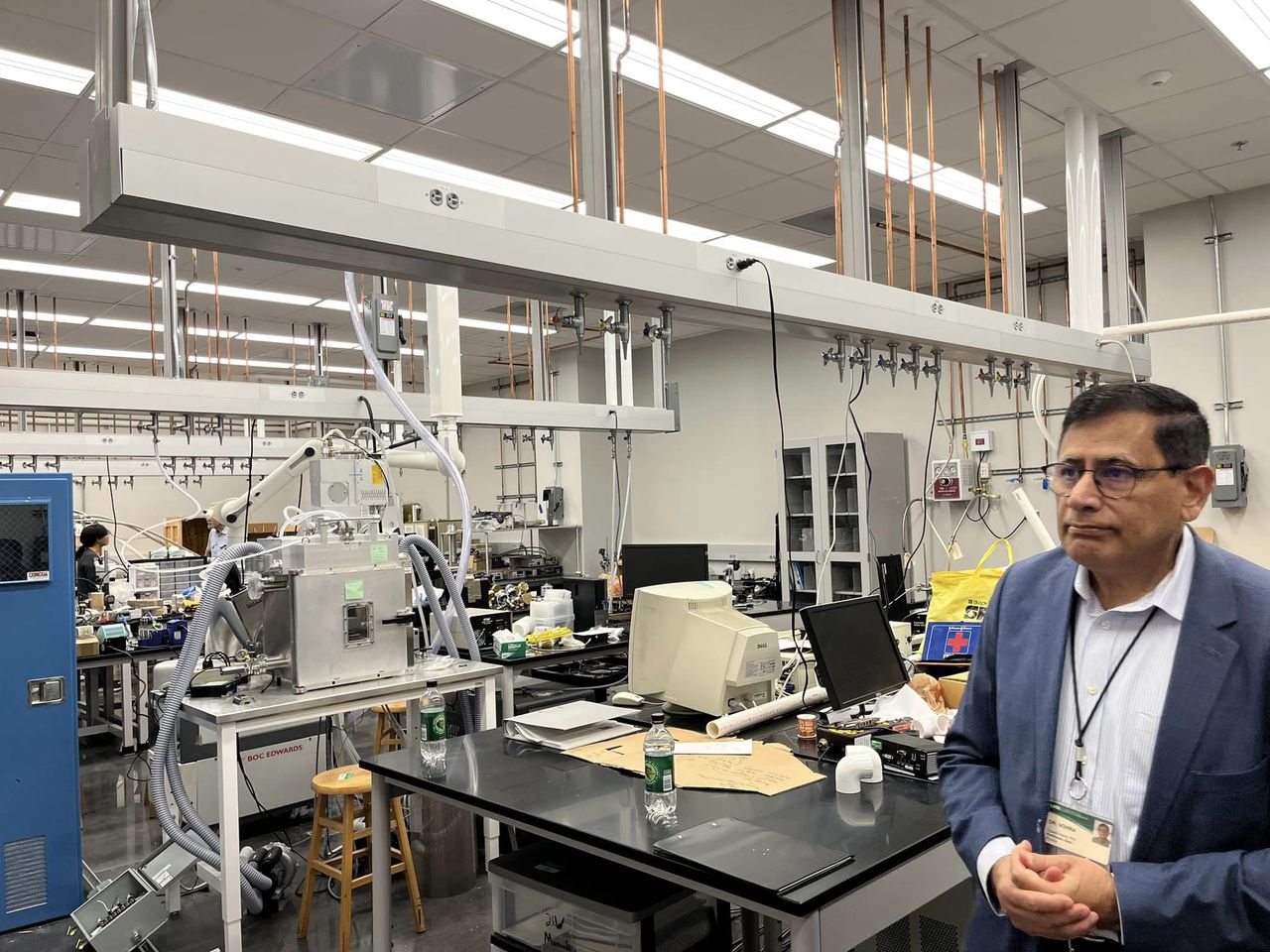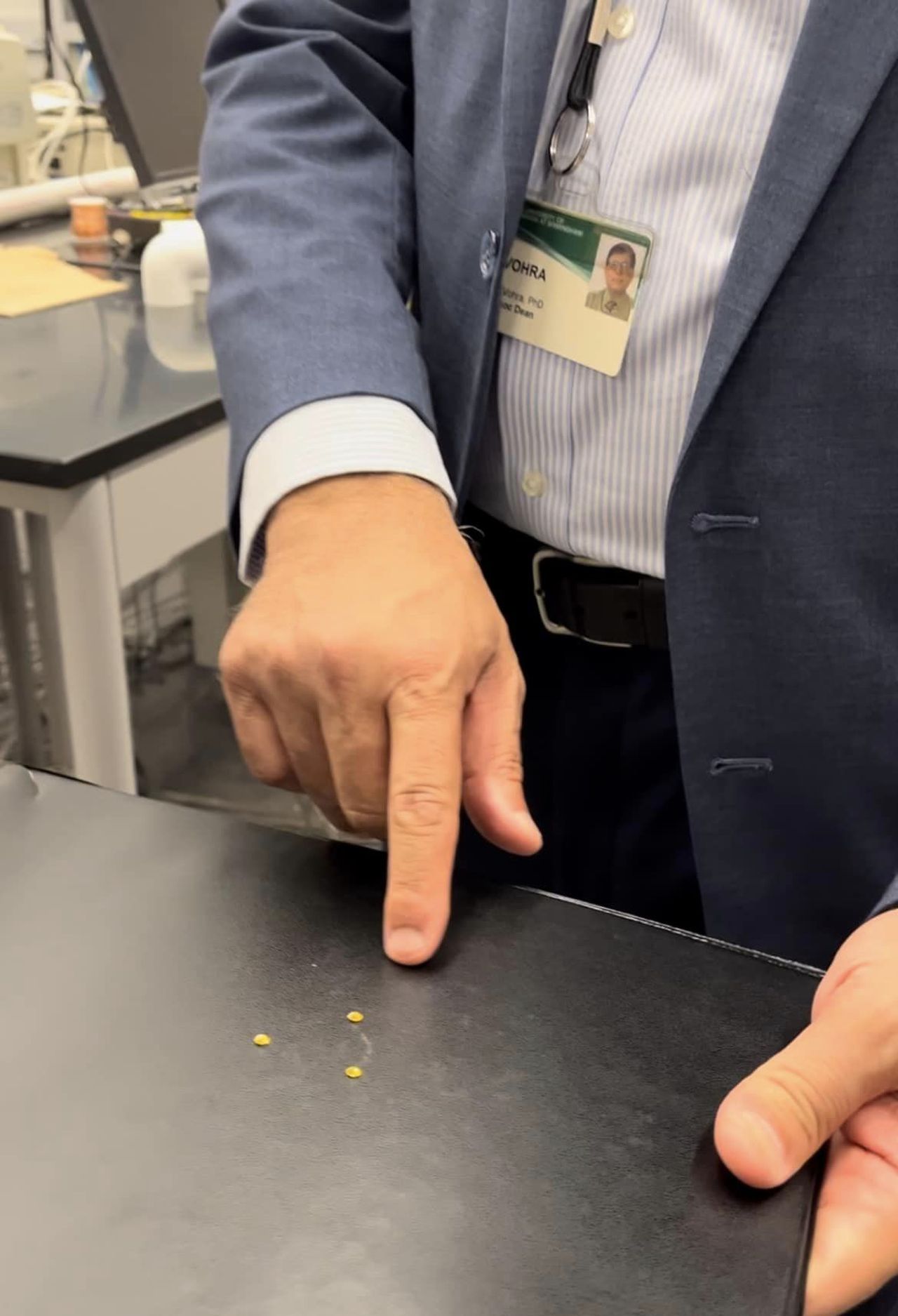As UAB physicists make diamonds, new $75 million science building shines
UAB opened its $75 million new science building on Thursday, and physicists are already set up to make diamonds in a basement lab.
The diamonds are not for jewelry, but for scientific applications.
On a grand opening tour of the new facility that’s now home to the Physics and Biology departments for the University of Alabama at Birmingham, a professor showed off several yellow synthetic diamonds made in the lab in the old Campbell Hall.
The Microwave Plasma Chemical Vapor Deposition reactor, which uses microwave power to break down methane and hydrogen gases to grow diamonds in the lab, has now been moved to a basement room of the new building. The South Science Hall and East Science Hall, part of the new Science and Engineering Complex, opened Thursday.
Large tanks are ready to combine methane and hydrogen into a mixture to produce high-pressure, high-temperature, nitrogen-doped synthetic diamonds.
“We are waiting for our gases to arrive,” said Yogesh Vohra, professor of physics at the University of Alabama at Birmingham.
Vohra held up several samples of yellow diamond crystals made in UAB’s lab to show a tour group. “If you have a nitrogen impurity in a diamond, it will look yellow,” said Vohra, holding up several samples of yellow diamonds made in UAB’s lab. “If you have boron, it will look blue, like the Hope Diamond.”
The Microwave Plasma Chemical Vapor Deposition reactor at UAB uses microwave power to break down methane and hydrogen gases to grow diamonds in a lab, which has now been moved to a basement room of the new Science Hall, the first phase of the new Science and Engineering Complex. Physics professor Yogesh Vohra shows some samples of yellow synthetic diamonds made at UAB for scientific purposes. (Photo by Greg Garrison/AL.com)
The applications of synthetic diamonds include making a coating on artificial metal joints for hip and knee surgeries to make the joints last longer.
“If you want to improve the longevity of your hip or knee joint, one of the options is to coat with a nano-diamond, very fine diamond,” Vohra said. “Right now if your knee joint fails after 10 years, this will last for 30-plus years.”
The diamonds are also used in high-electron mobility semiconductors.
“We put a sensor on top of these diamonds,” Vohra said. “We use two diamonds against each other to generate high pressure. Our scientific interest is how materials behave under extreme conditions of pressure.”
UAB has been a pioneer in creating synthetic diamonds for scientific purposes.
“We were the first ones to produce it in large sizes,” Vohra said.

Yogesh Vohra, UAB professor of science, explains the process of making synthetic diamonds in a lab in the new science building that opened Aug. 17, 2023. (Photo by Greg Garrison/AL.com)
“We supply to some of our collaborators in the United States,” Vohra said. “The real market is high-tech application, not producing it for jewelry. That’s everywhere now. Jewelry prices have come down because of this – you are growing diamonds using methane, which is plentiful. You don’t have to drill a hole in the ground to mine it.”
The equipment was moved in the new building two weeks ago. Biology and physics classes begin on Monday.
“UAB is excited to open this first phase of our Science and Engineering Complex, which will advance strategic aims in all pillars of our mission, including our ambitious goal of reaching $1 billion in research expenditures,” said UAB President Ray L. Watts. “Here students, faculty and staff — from the departments of Biology, Physics and Chemistry, and others campuswide — will collaborate more effectively than ever and accelerate innovation, economic development and the training of a 21st century workforce for the state of Alabama.”
The facility provides more than 138,000 gross square feet of classrooms, instructional space and laboratories for the Physics, Biology and Chemistry departments, and offices for faculty and staff.
Next door, construction is underway on the adjoining Frances and Miller Gorrie Hall, which will also be part of the Science and Engineering Complex.
“This world-class facility is designed to encourage conversation and collaboration among students and researchers across biology, chemistry, physics and, eventually, engineering,” said College of Arts and Sciences Dean Kecia M. Thomas. “Regardless of a student’s major, every student who fulfills a lab science requirement in one of those departments will have an opportunity to enjoy this incredible building.”
